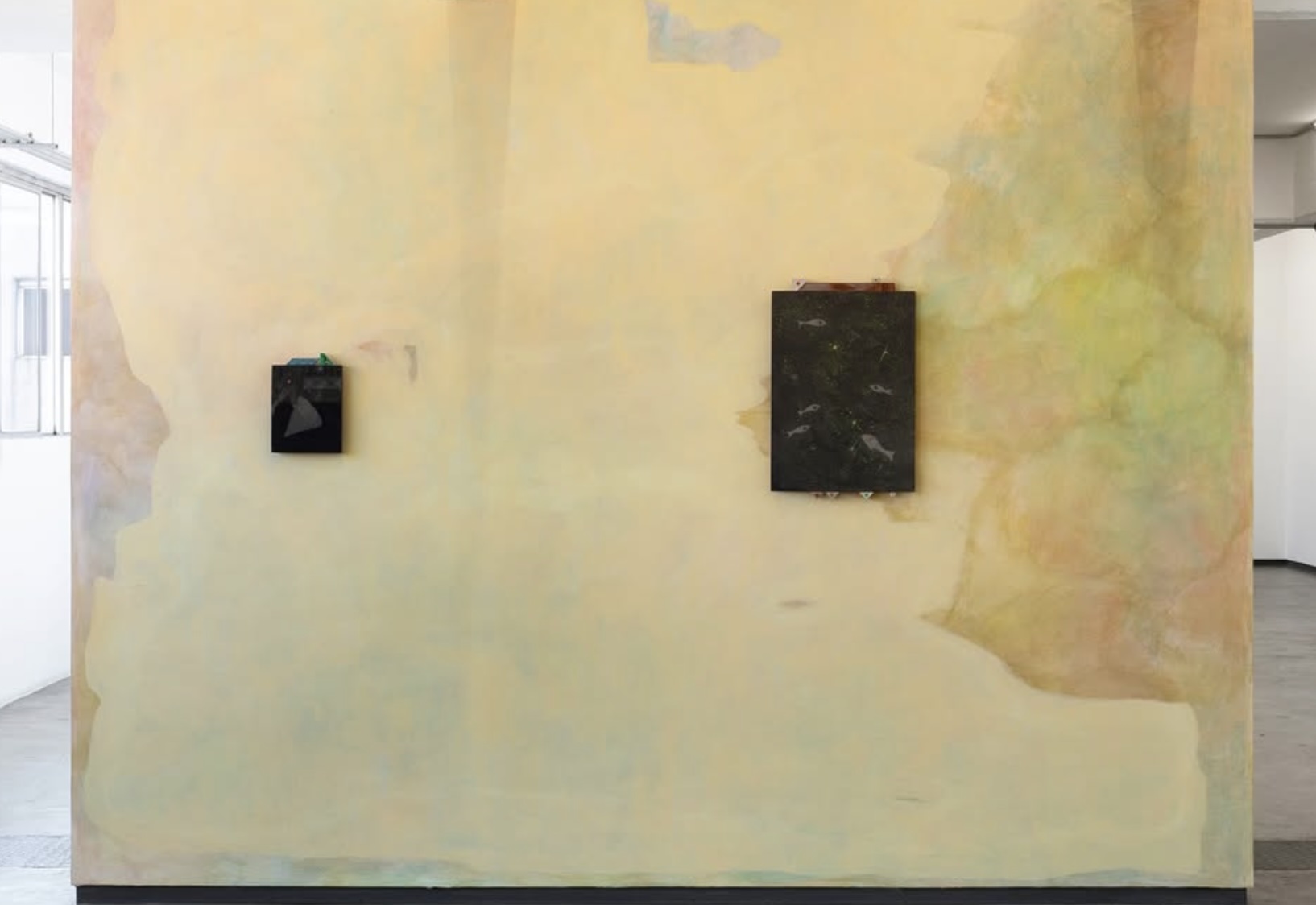
Sebastián Hidalgo and Adrián White
Guided tours and cocktail
Guided tour
-> Jan 11 2025
Saenger Galería invites you to guided tours (and cocktail) of its two current exhibitions: Sebastián Hidalgo's Pueblo de pesca and Adrián White's Seguir el paso al caminar de las cosas.
Pueblo de pesca
“When time goes by, everything real takes on a fictional aspect,” says the narrator of Así empieza lo malo, a novel by Javier Marías published ten years ago. This idea could describe the intention of Mexican artist Sebastián Hidalgo in his most recent exhibition, Pueblo de pesca, in which he constructs a fiction based on his meditations on life today. The central axis of the story is a simple and repetitive, but essential action in the preservation of life: “fish to eat, eat to live; and the same happens with fish”. Faced with this fact, Hidalgo seeks “to start from something simple that serves as a perimeter to generate spaces for reflection, contemplation and reverie, with the aim of interrupting and releasing logic, even if only momentarily”.
Pueblo de pesca takes place in the present tense. It is not the overflow of the past that Marías resorts to in his stories, but the imminent now in which we transit through this critical vehicle. With this tool, Hidalgo also manifests his creative process, based on an automatic and non-rational action, in a “thinking with his hands”, where he confronts logic with a continuous flow of direct perception and creation. He seeks to free the mind from the rational world to give way to a more immediate existence, of sensitive contiguity: “When working I let language develop by itself, allowing images to be a form of thought. The goal is not to understand everything, but to make something happen. It is to set the hook and wait.”
The exhibition consists of a new set of oil paintings and drawings on paper in small and medium format that are accompanied by a mural painting and a chromatic intervention in the exhibition space that delves into a pictorial language that hybridizes the representational and the non-objective. With this, Hidalgo explores both the thresholds of the supports, “the beauty of abstraction”, and the periphery of vision, the “peeking through the windows, outward or inward”. The work thus creates a membrane between two worlds, the terrestrial and the underwater, and also between painting and drawing, which become sketch paintings. Pueblo de pesca also functions as a vital force capable of catalyzing the saturation of our channels of perception in everyday life to recover spaces of rest, as if they were mandalas of protection or a pair of special shoes to immerse oneself in the uninterrupted reality of the present and still float on the edge of it.
–Christian Barragán
Seguir el paso al caminar de las cosas
An image of time, the internal time, which records the happening of things, from the trace of their appearance to the trail of their disappearance. An inner image of the present: both the intimacy of its duration and the density due to the accumulation of events. A specter of presence, but not absence, but its transparency, the volatile nature of things. A suspended image of time passing. The interior time, which registers the friction and transference of things. An image and its dissolution: keeping pace with the passing of things. Adrian White works with some simple and common materials: graphite and charcoal in powder and stick presentations, dissolved and undissolved white acrylic, wood, breath, time, especially time, and little else. He is interested in the properties of the material he employs, such as the containment and dispersion potential of an accumulation of powdered charcoal contained in the bowl of his hand that he suddenly spreads into the air with his breath. He is intrigued by the indefiniteness of the gesture, as well as the strangeness obtained by the sum of countless layers of graphite and white acrylic superimposed through geometric and organic stencils. Adrian White meditates on the indeterminacy of a thought, and with severe patience he digs into the geology of each image thus obtained. He recalls Szymborska and her knocking on the door of a stone: It's me, let me in / I want to penetrate inside you, / take a look, / breathe you in.
Adrian White's work is modest and rigorous. While he shies away from the protagonist din of color, he resorts to the friction that the achromatic palimpsest of whites and grays propitiates in the gaze, an optical alteration in which planes, marks and transparencies merge densely. His drawings respond to the notion of landscape in relation to the body, the gaze and silence, putting in tension the experience with the image. His work is, simultaneously, the saturation of temporalities gathered during the creative process, and the emptying of all chronological order, with no starting point or end point.
Only the latency of stages in the becoming of an image, as evidenced by the residues and traces left behind by the enterprise of following the course of the happening of things.
–Christian Barragán